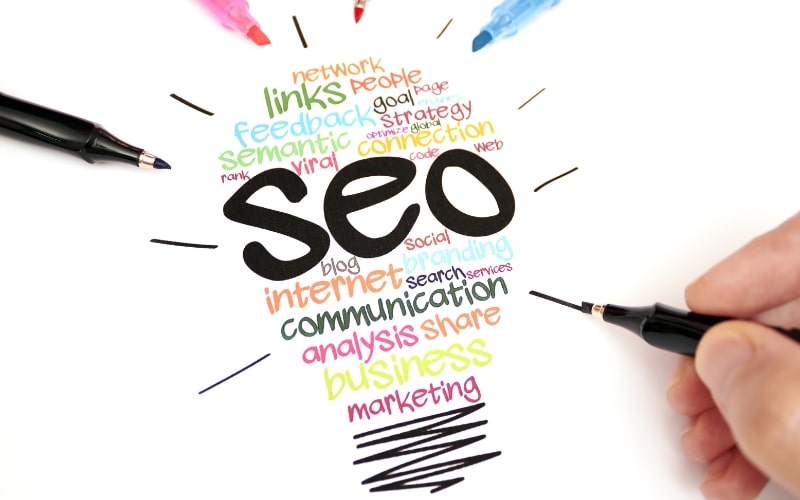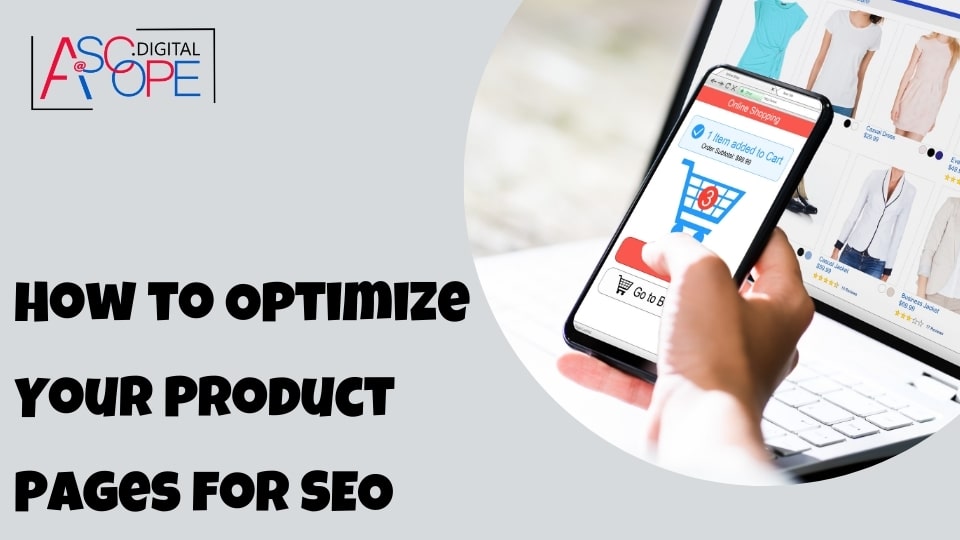In the ever-evolving landscape of e-commerce, search engine optimization (SEO) plays a crucial role in driving traffic and increasing sales. Optimizing your product pages for SEO can make the difference between a thriving online store and one that struggles to attract visitors. This comprehensive guide will explore the best practices and strategies for optimizing your product pages to rank higher on search engines and convert more visitors into customers.
Understanding the Basics of SEO

Before diving into specific tactics for product pages, it’s essential to understand the basics of SEO. SEO involves optimizing various elements of your website to improve its visibility on search engines like Google. These elements include keywords, content quality, website structure, and user experience. For e-commerce websites, focusing on product page optimization is particularly important because these pages are where the conversion happens.
Keyword Research: The Foundation of SEO
Keyword research is the cornerstone of any successful SEO strategy. It involves identifying the terms and phrases that potential customers use when searching for products like yours. To optimize your product pages effectively, start by conducting thorough keyword research.
Tools for Keyword Research
Several tools can help you identify relevant keywords for your product pages. Google Keyword Planner, Ahrefs, SEMrush, and Moz Keyword Explorer are popular options. These tools provide insights into search volume, competition, and related keywords, helping you choose the most effective terms for your optimization efforts.
Choosing the Right Keywords
When selecting keywords, focus on relevance and search intent. Long-tail keywords, which are longer and more specific phrases, often have lower competition and higher conversion rates. For example, instead of targeting a broad keyword like “running shoes,” consider a more specific term like “women’s lightweight running shoes.”
On-Page SEO: Optimizing Individual Product Pages
On-page SEO refers to optimizing the content and HTML source code of individual pages on your website. For e-commerce product pages, this involves several key elements:
Title Tags
The title tag is one of the most important on-page SEO elements. It appears as the clickable headline in search engine results and should include your primary keyword. For example, if your product is a pair of men’s leather boots, a good title tag might be “Men’s Leather Boots – Stylish and Durable Footwear.”
Meta Descriptions
Meta descriptions provide a brief summary of your product page and appear below the title tag in search results. While meta descriptions don’t directly impact rankings, they influence click-through rates. Write compelling and concise descriptions that include your target keywords and highlight the product’s key benefits.
URL Structure
A clean and descriptive URL structure improves user experience and SEO. Avoid generic URLs like “www.yourstore.com/product123” and opt for descriptive ones like “www.yourstore.com/mens-leather-boots.” Including keywords in the URL can also provide a slight SEO boost.
Creating High-Quality Content

Content is king when it comes to SEO. High-quality, informative, and engaging content not only helps with rankings but also enhances the user experience. For product pages, this includes product descriptions, images, videos, and customer reviews.
Product Descriptions
Unique and detailed product descriptions are essential for both SEO and conversions. Avoid using manufacturer descriptions, as duplicate content can hurt your rankings. Instead, write original descriptions that highlight the product’s features, benefits, and uses. Incorporate relevant keywords naturally, but avoid keyword stuffing.
Images and Alt Text
High-quality images are crucial for e-commerce, as they help customers make purchasing decisions. Optimize images by compressing them to improve page load times and including descriptive alt text. Alt text should describe the image and include relevant keywords, which helps search engines understand the content of the images.
Videos
Videos can enhance the user experience and provide valuable information about your products. Consider adding product demonstration videos, how-to guides, or customer testimonials. Optimize video content by including keywords in the video title, description, and tags.
Customer Reviews
Customer reviews are a powerful form of social proof that can boost conversions and improve SEO. Encourage satisfied customers to leave reviews and respond to them promptly. Search engines value fresh and user-generated content, so regularly updated reviews can positively impact your rankings.
Technical SEO: Ensuring Your Pages Are Search Engine Friendly
Technical SEO involves optimizing the technical aspects of your website to ensure search engines can crawl and index your pages effectively. For e-commerce product pages, several technical factors are particularly important:
Mobile Optimization
With the increasing use of mobile devices for online shopping, ensuring your product pages are mobile-friendly is crucial. Google uses mobile-first indexing, meaning it primarily uses the mobile version of your site for ranking and indexing. Use responsive design to ensure your pages adapt to different screen sizes and provide a seamless user experience on all devices.
Page Load Speed
Page load speed is a critical factor for both user experience and SEO. Slow-loading pages can lead to higher bounce rates and lower rankings. Optimize your product pages by compressing images, leveraging browser caching, and minimizing HTTP requests. Tools like Google PageSpeed Insights can help identify areas for improvement.
Schema Markup
Schema markup is a form of structured data that helps search engines understand the content of your pages. For product pages, schema markup can enhance your search results with rich snippets, including product ratings, prices, and availability. Implementing schema markup can improve your click-through rates and drive more traffic to your site.
Internal Linking: Building a Cohesive Site Structure
Internal linking involves linking to other pages within your website. This practice helps search engines understand the hierarchy and relationship between your pages and can improve your site’s overall SEO.
Related Products
Linking to related products on your product pages can enhance the user experience and keep visitors on your site longer. For example, if a customer is viewing a product page for a smartphone, you can link to related products like phone cases, chargers, and screen protectors.
Category and Subcategory Pages
Ensure your product pages link back to relevant category and subcategory pages. This helps search engines understand the structure of your site and allows visitors to easily navigate between related products.
Off-Page SEO: Building Authority and Trust
Off-page SEO involves activities outside your website that influence your rankings. Building backlinks from reputable websites is a key component of off-page SEO.
Acquiring Backlinks
Backlinks are links from other websites that point to your site. They act as votes of confidence and can significantly impact your SEO. To acquire backlinks, focus on creating high-quality content that other websites want to link to. You can also reach out to industry influencers, bloggers, and publications to feature your products.
Social Media

While social media signals don’t directly impact SEO, they can drive traffic to your product pages and increase your online visibility. Share your products on social media platforms and encourage your followers to engage with and share your content. This can lead to more backlinks and improved SEO over time.
Monitoring and Analyzing Your SEO Performance
Optimizing your product pages for SEO is an ongoing process. Regularly monitoring and analyzing your performance is crucial to identify areas for improvement and measure the effectiveness of your strategies.
Google Analytics
Google Analytics is a powerful tool for tracking and analyzing your website’s performance. Monitor key metrics like organic traffic, bounce rate, conversion rate, and average session duration. Use this data to identify trends and make informed decisions about your SEO strategy.
Search Console
Google Search Console provides valuable insights into how your site performs in search results. Monitor your site’s indexing status, search queries, and backlinks. Use Search Console to identify and fix any technical issues that may be affecting your SEO.
Staying Up-to-Date with SEO Trends
SEO is constantly evolving, and staying up-to-date with the latest trends and best practices is essential. Follow industry blogs, attend webinars, and participate in SEO forums to keep your knowledge current. Adapting to changes in search engine algorithms and user behavior will help you maintain a competitive edge.
Maximize Your Reach: Enhance Your Product Pages for Better SEO Performance
Effective SEO optimization of your product pages can significantly boost traffic and sales for your website. It’s crucial to focus on several key elements to achieve this. Start by conducting thorough keyword research to understand what your potential customers are searching for. Incorporate these keywords naturally into your product titles, descriptions, and meta tags. High-quality, unique content is essential; ensure your product descriptions are detailed and informative, providing real value to your visitors. Additionally, optimize your images by using descriptive file names and alt tags. Internal linking to related products or categories can help keep visitors engaged on your site. Lastly, pay attention to page load speed and mobile responsiveness, as these factors are critical for both user experience and search engine ranking. Thus, improving traffic and sales for your website. Read more on the other reasons why your website isn’t getting traffic.
Conclusion
Optimizing your product pages for SEO is a multifaceted process that involves keyword research, on-page and technical SEO, high-quality content creation, internal and external linking, and ongoing monitoring. By implementing the strategies outlined in this guide, you can improve your search engine rankings, drive more organic traffic to your e-commerce store, and ultimately increase your sales and revenue. Remember, SEO is an ongoing effort, and staying committed to continuous improvement will yield long-term benefits for your online business.
In the competitive world of e-commerce, mastering SEO for your product pages is a critical step toward achieving online success. By focusing on the fundamentals of keyword research, high-quality content, technical optimization, and building authority through backlinks, you can create a robust SEO strategy that drives traffic and boosts conversions. Keep experimenting, analyzing, and refining your approach to stay ahead of the competition and ensure your product pages rank prominently in search engine results. With dedication and persistence, your efforts will pay off, leading to increased visibility, customer engagement, and business growth


